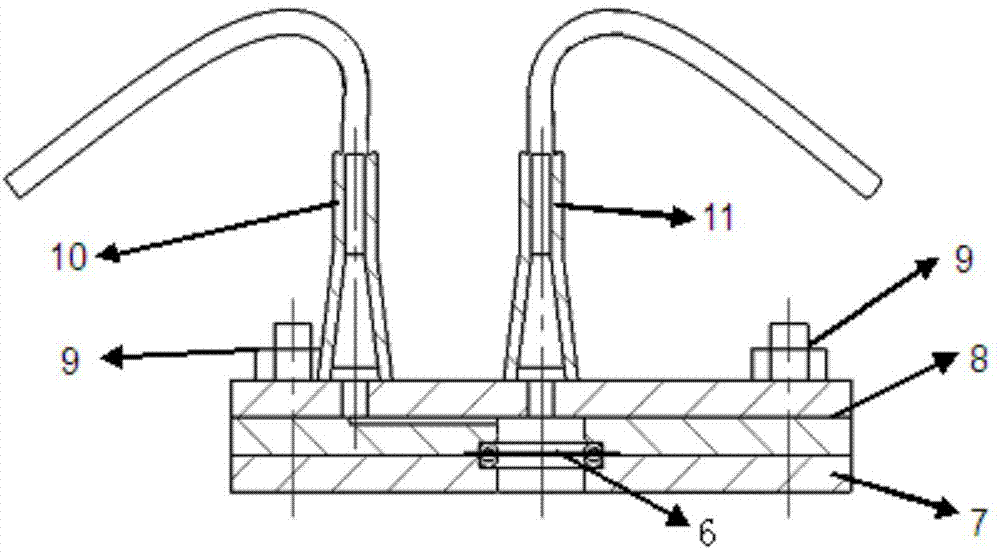Piezoelectric detection sensor for microcystic toxins based on molecular imprinting technology
A molecular imprinting technology, microcystin technology, applied in the direction of instruments, measuring devices, scientific instruments, etc., can solve the problems of inability to identify toxins, false positive reactions, etc. The effect of low requirements and simple operation
- Summary
- Abstract
- Description
- Claims
- Application Information
AI Technical Summary
Problems solved by technology
Method used
Image
Examples
specific Embodiment
[0032] For the synthesis of the microcystin molecularly imprinted membrane 3, the present invention adopts a photopolymerization synthesis method, and the quartz crystal oscillator is cleaned with an oxygen plasma cleaner for 2-4 minutes, and the ethanol solution of 50-1000 mM undecyl mercaptan or ten Soak in the ethanol solution of dithiol for more than 12 hours, take it out, rinse with ethanol, and blow dry with nitrogen; mix 0.1-200 umol microcystin and 1-2000 umol methacrylic acid in 1-2 mL ethanol solution and let stand for 3 hours Above, add 2-2000 umol ethylene glycol dimethacrylate and 0.016-16 mg benzophenone, and treat with nitrogen for more than 10 minutes; drop 100 uL of the prepared reaction solution on the surface of the sensor substrate, in a nitrogen protection environment Use 365±10 nm ultraviolet light to irradiate the photocrosslinking reaction. After the surface is slightly dry, continue to add the reaction solution dropwise, repeat more than 10 times, and t...
PUM
 Login to View More
Login to View More Abstract
Description
Claims
Application Information
 Login to View More
Login to View More - R&D
- Intellectual Property
- Life Sciences
- Materials
- Tech Scout
- Unparalleled Data Quality
- Higher Quality Content
- 60% Fewer Hallucinations
Browse by: Latest US Patents, China's latest patents, Technical Efficacy Thesaurus, Application Domain, Technology Topic, Popular Technical Reports.
© 2025 PatSnap. All rights reserved.Legal|Privacy policy|Modern Slavery Act Transparency Statement|Sitemap|About US| Contact US: help@patsnap.com



